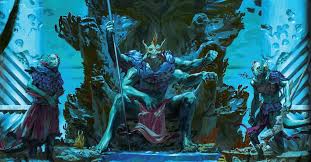Sooner or later every Dungeon Master considers the possibility of running an adventure underwater. Whether your plan is to have your adventurers explore in the ocean, or in some freshwater lake, some issues need to be addressed in order to make such an adventure possible. This article is going to discuss some of the important points one must consider before embarking on such adventures.
Some of these points are as follows:
- How do the player characters breath underwater?
- How do they move? How fast? Are they in armor?
- How well do the adventurers see? How far?
- How does underwater movement affect combat?
- What spells and magic work underwater?
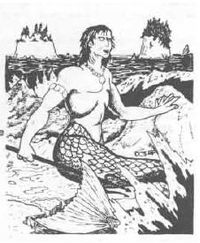
How do the characters breath underwater
Obviously the ability to breath underwater is a paramount concern to the players and the Dungeon Master. Without this ability one could spend little time, if any, beneath the surface of the water to explore. There are, however, magical means in which one could breath underwater for extended periods of time. These include:
- Spells such as Water Breathing. Alter Self and Airy Water (1st edition)
- Potions such as Water Breathing
- Magic Items such as Helms of Underwater Action
Of course, the Dungeon Master, could make other magical arrangements for the characters to breath underwater. Or perhaps there is a bubble under the sea which provides air to those within. For longer adventures under the surface there might need to be more extended means of water breathing available to the characters. Perhaps an experimental potion which provides the long term ability to under the surface.
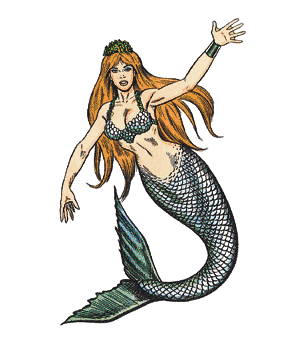
Movement under water
People are not fish. We do not swim like a fish. And walking underwater is not like walking on land. One could swim. Or one could choose to walk upright. Someone wearing metal armor is not able to swim. Walking underwater involves a certain amount of resistance from the water itself which slows movement.
The land beneath the waves is not all flat. There are hills, coral, shipwrecks, seaweed and chasms. Fish and underwater monsters abound beneath the surface.
Magical items can make movement easier. A ring of free action or helm of underwater action (1st edition) might make underwater movement faster and easier. Other magical items and spells might also improve movement underwater.
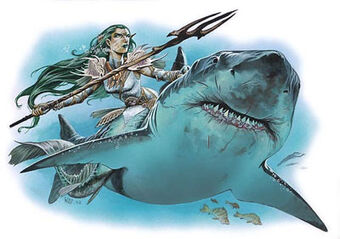
Visibility underwater
The ability to see underwater is severely restricted for humankind and humanoids working under the surface. How murky the water greatly affects visibility. Different editions of Dungeons and Dragons have slightly different rules on underwater visibility. These rules are as follows:
- 1st Edition – the basic rule is 50 feet in fresh water and 100 feet in salt water. This could be modified by magic such as light spells or by infravision or ultravision. Some other things might restrict visibility such as sea weed beds or ink clouds from sea creatures. Or perhaps one area is just murkier because of the type of sea bed one is walking through.
- 5th Edition – Vision is dependent upon the light available and the murkiness of the water itself. Clear water and bright light gives visibility of 60 feet. Clear water but dim light gives visibility of only 30 feet. And murky water or no light gives visibility of only 10 feet.
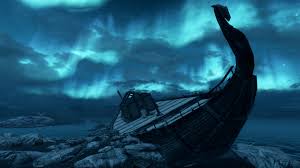
Combat Underwater
Combat under the surface is affected by the resistance from the water to swings of a blade. Land born creatures are not used to this resistance and will be adversely affected by it. Different editions of Dungeons and Dragons had different rules for underwater combat. Some of these are as follows:
1st Edition – Crushing and slashing weapons are ineffective. Thrusting weapons such as spears, tridents and javelins are effective. Aquatic creatures will always strike first as they are used to the reduced movement ability underwater unless the player character is wearing magical items such as free action or underwater action.
Nets could be very effective underwater. The Sahuagin are masters of the net. To be used as a weapon the net must have weights. Underwater races can typically throw a net as far as 15′ but a Sahuagin can throw one up to 20′. Some battle nets also have barbs attached to them to help with the trapping of victims. The use of such a net is very difficult for surface dwellers. They do so at -4 to hit until sufficiently trained in their use.
Crossbows made specifically for underwater use are effective. Just about all other missile weapons are not effective underwater. Underwater range for these special crossbows is half that of a surface version of the weapon.
Spell use underwater is limited and will be discussed in the next section.
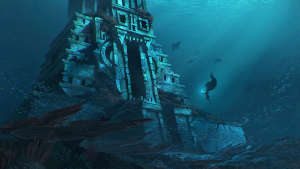
5th Edition – Underwater combat is greatly simplified. When making a melee attack underwater a creature without swimming speed (magical or otherwise) has disadvantage on attack rolls unless using a thrusting weapon such as a dagger, javelin, short sword, spear or trident. Ranged weapons automatically miss at ranges beyond the normal range for the weapon. Even within normal ranges the attack roll has disadvantage unless the weapon is a crossbow, net or a thrown weapon such as a javelin, trident or spear. Creatures immersed in water have resistance to fire damage.
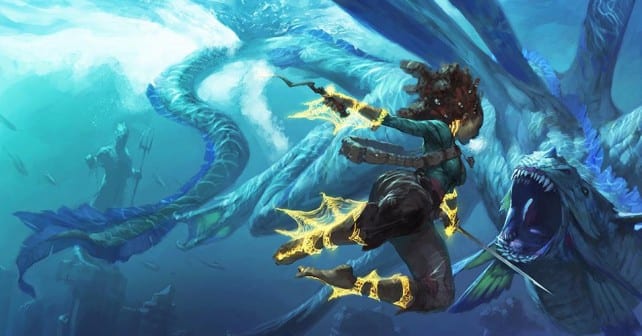
Spell use underwater
Spell use may be drastically affected by the underwater environment. The ability to even cast a spell might require speech. Can one speak while breathing underwater? Can one use material components in order to cast a spell?
5th Edition is strangely silent on the subject of what spells will work underwater. It also avoids mentioning under what conditions spell use might be possible. One would have to assume that if one can breath underwater then one can cast spells in 5th Edition. But how are these spells affected by the water? This subject is not covered in the 5th Edition DMG.
1st Edition, however, had extensive rules on which spells would not work at all underwater. These included:

- Speak with dead
- Lower Water
- Speak with plants
- Atonement
- Flame strike
- Aerial Servant
- Control Weather
- Wind Walk
- Predict weather
- Fire trap
- Heat metal
- Call lightning
- Pyrotechnics
- Produce Fire
- Animal summoning (any version)
- Call woodland beings
- Produce fire
- Control winds
- Insect plague
- Pass plant
- Wall of fire
- Conjure fire elemental
- Fire seeds
- Weather summoning
- Chariot of Sustarre
- Control weather
- Creeping doom
- Fire storm
- Affect normal fires
- Burning hands
- Find familiar
- Fireball
- Flame arrow
- Gust of wind
- Fire charm
- Fire shield
- Distance distortion
- Guards and wards
- Cacodemon
- Delayed blast fireball
- Incendiary cloud
- polymorph any object
- Meteor swarm
- Wall of fog
- Illusionary script
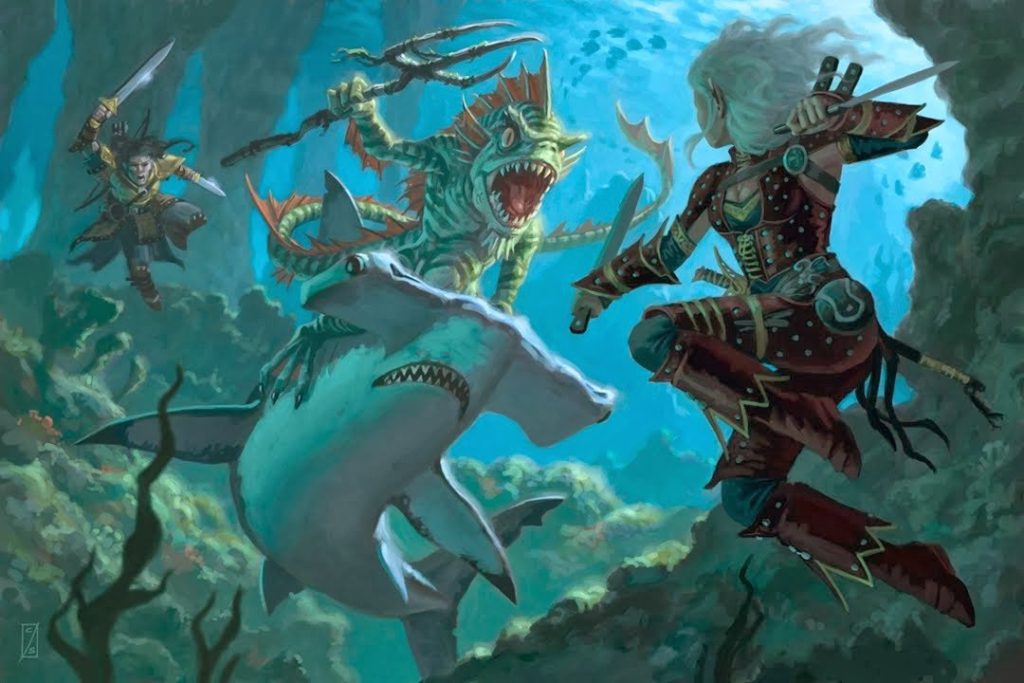
One can see some obvious reasons for some of these restrictions. Fire spells do not work underwater. But weather spells also apparently do not work. As do spells about summoning creatures or allies (or even insects). Now some of these spells did work if they took place within an air bubble created by an airy water spell. But they would not work directly within water. Presumably these kinds of spells should be precluded in 5th Edition as well but this is not mentioned specifically in any of the core books that I could find.
But water does more than just preclude certain spells. It might also change the effects of some spells. Some examples of this from 1st Edition:
- Part water creates a tunnel beneath the sea
- Earthquake creates a shock wave which stuns creatures in the vicinity
- Conjure earth elemental allows such a creature to be made but it is restricted to the sea or lake in which it was made
- Fly – this spell allows a magic user to swim very easily in the water
- Lightning bolt – when cast underwater it has an effect like a fireball rather than the usual forked appearance above water
- Ice storm – the hail created will be weaker than that above the surface
- Wall of ice – the wall will be created by the spell but will float to the surface and bob about like an ice cube
As you can see spells will not, necessarily, work as expected under water.
As 5th Edition does not specifically alter the rules for these spells as the early editions did the Dungeon Master is going to need to use a little common sense. Mages are not going to be able to run around under the water nuking everything with fireballs. This would not make sense. Using some of these lists from 1st edition might give you a good idea on what should not be usable under the surface and what might be modified.
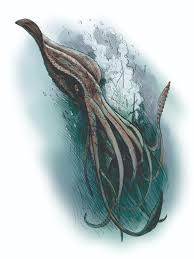
Types of adventures under the surface
An entire world lives beneath the waves. There are endless possibilities for encounters underwater. And there are lots of reasons why players might want to explore such places. Some possibilities include:
- Shipwrecks and sunken treasures
- Underwater temples
- Sahuagin strongholds
- Sunken statues or monoliths which can be seen from the surface
- Sunken ruins
- Storm giant lairs
- Dragon turtle lairs
- Underwater cave systems
- Beds of giant oysters (and pearls)
- Underwater castles
- Giant bubble cities beneath the surface
One only needs to use a little imagination to come up with adventures to entice players to explore under the surface of the sea. And such an adventure could provide a great deal of entertainment. It is an alien environment for surface dwellers. It is an environment where the aquatic creatures have all of the advantages. And there could be massive riches beneath the sea.
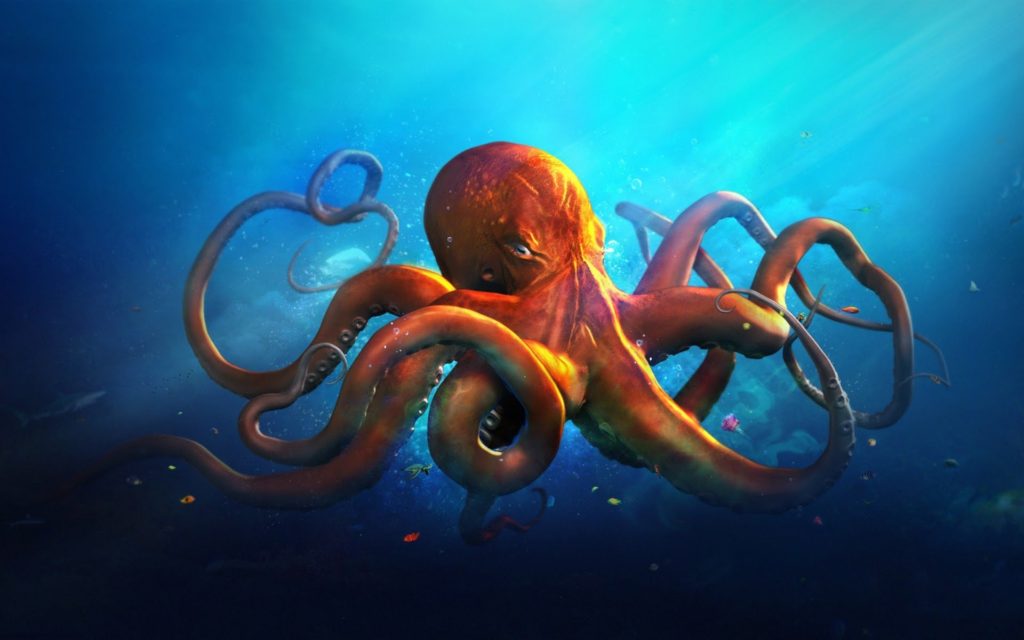
Underwater adventures give the Dungeon Master a chance to introduce their players to a new world
Beneath the surface are new creatures that the players will likely not have yet faced. There will be new challenges that the characters will not yet have experienced. And this can make a campaign seem new again as the players encounter things that are entirely new to them on a regular basis.

If you enjoyed this article then perhaps you will enjoy these as well:
- Caverns of Thracia Review
- The Maltese Clue Review
- Verbosh Review
- Lara’s Tower Review
- Restormel Review
- The Dragon Crown Review
- Escape From Astigar’s Lair Review
- Hall of the Fire Giant King Review
- Glacial Rift of the Frost Giant Jarl Review
- Steading of the Hill Giant Chief Review
- Tegel Manor Review
- F’Deck Fo’s Tomb Review
- Operation Ogre Review
- Inferno Review
